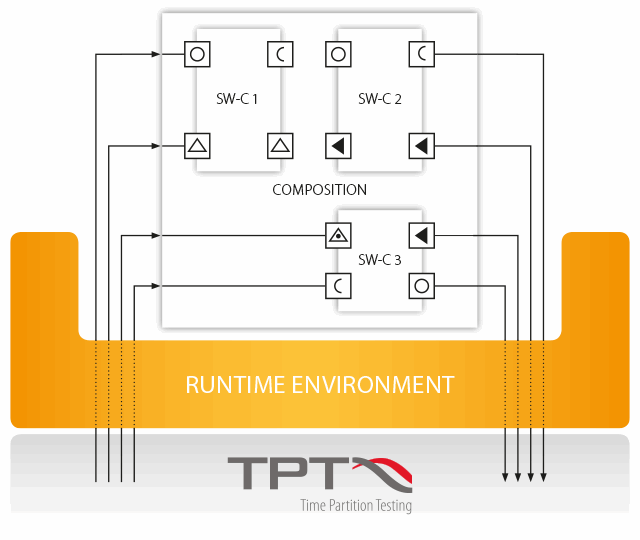Testing AUTOSAR with TPT.
Testing AUTOSAR software components is easy and automated with TPT.
TPT offers a solution for atomic AUTOSAR software components (SWCs) as well as for compositions of several SWCs or for virtual ECUs.

Testing AUTOSAR software components.
For given SWCs and their associated ARXML files, TPT automatically generates a test harness for functional tests. This test harness integrates a test RTE which is generated by TPT for one or more SWCs.
Important interfaces such as client/server ports, sender/receiver ports, per-instance memory (PIM), inter-runnable variables (IRV), mode declaration groups, exclusive areas and calibration parameter ports are supported.
Alternatively, FUSION nodes can be generated from SWCs in a very similar way as a test environment for co-simulation of multiple SWCs or for interaction with other software or dynamic models.
Back-to-Back testing of AUTOSAR Software.
If your AUTOSAR software components have been developed with Simulink or TargetLink models you can easily test and compare the behavior of the generated SWC code with the behavior of the original models with TPT. Easily transfer functional tests and test assessments from MiL to the AUTOSAR test environment and compare the results by means of fault-tolerant back-to-back testing.

